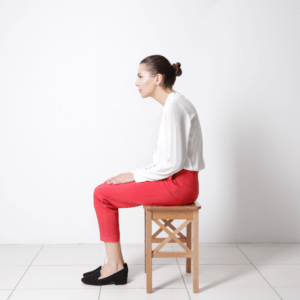The best yoga poses for back pain relief
Stretching is a fantastic way to help relieve the discomfort of back pain. Yoga 🧘♀️ is a low impact, and effective way to stretch, relax tight muscles, ease pain, and build strength in the areas that support your back. It also supports the mind-body 🧠🧎♀️ connect that helps us deal with the stress. In just a few minutes 🕣 a day, the right yoga poses can do all of this and more.
You might not think yoga 🧘♂️ is for you, or you may not know where to start. These beginner-friendly poses are an excellent 🙌 way to help relieve back pain and improve your overall quality of life.
The cat-cow pose
The cat 🐈 and the cow 🐄 are two separate yoga poses but they are usually practiced together and are very effective when combined.
The cat-cow pose works to stretch and strengthen the muscles in your lower back and those that extend vertically up the length of your back, core, triceps, chest, neck, and your glutes. It is a gentle 🤗 move that mobilises the spine, promotes mobility, and helps to improve your posture.
Start on all-fours – in a tabletop position with your knees bent – and then move into the cat pose by slowly (and gently) pushing your spine up and arching your back. Hold this for a few seconds while breathing deeply and looking down at the floor.
You can then move into the cow pose by scooping your spine in, pressing your shoulder blades back and lifting your head. You’re essentially doing the opposite of arching your back.
Slowly, with fluid and smooth movements, alternate between the cat and the cow pose 10 times. Be sure to keep your knees and bum still while doing these poses so that you’re only working your spine and the surrounding muscles.
The sphinx pose
This pose relaxes ☺ your lower back muscles and is often recommended for people who have sciatica pain or a slipped disc. It also gently strengthens your spine and buttocks as well as stretching your chest, shoulders, and abdomen. There’s also research that has shown this is great for relieving stress.
To do the sphinx pose, you’ll need to lie on your tummy with your legs extended behind you. Then, engage the muscles in your lower back, bum, and thighs. Bring your elbows under your shoulders with your forearms on the floor and your palms facing down. Slowly lift your upper torso and your head. Gently lift and engage your lower abs to support your back and ensure that you’re lifting through your spine and out the crown of your head, rather than collapsing into your neck. Look straight ahead as you fully relax in this pose while keeping your muscles engaged.
Ideally, you want to stay in this pose for about five minutes, but it may take a few weeks of practice before you can hold it comfortably for that long. Start by holding the pose for five seconds at a time and then gently lower your torso back to the ground.
The child’s pose
This comfortable, easy pose is packed with healthy 🌈 benefits. It’s a gentle forward fold that helps you to relax and release any tension 😌 in your neck and back while lengthening and stretching your spine. It also stretches and strengthens your hips, thighs, and ankles and has a proven positive effect on stress and fatigue🥱. Child’s pose can improve your blood circulation and your digestive system. If those aren’t good reasons to do this super simple pose, we don’t know what is!
To do the child’s pose, you’ll need to kneel on the floor with your knees hip width apart and your feet together behind you. Take a deep breath in and, as you exhale, lay your torso over your thighs. Try lengthening your neck and spine by drawing your ribs away from your tailbone and the crown of your head away from your shoulders. Breathing deeply, rest your forehead on the ground with your arms extended out in front of you.
Holding this pose for around three minutes is when it is most effective, but it may take a few days of practice before you can hold it for this long
The great thing about yoga is that it’s suitable for all ages 👪 and is usually simple to do. Yoga poses are comfortable, gentle, and they don’t put strain on any of your muscles. Many people think you have to be super flexible to do yoga, but this is not the case. The most important thing to consider when you’re doing yoga is to breathe deeply and remember that you’re doing this for your health and prosperity. We recommend you consult a qualified healthcare professional to ensure you have been correctly diagnosed before you partake in any exercises.
Check out our Inspired News blog to find more useful stretches and exercises that can help to relieve back pain, build endurance, and rehabilitate injuries.





